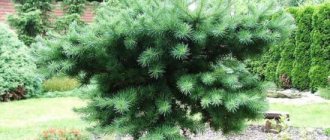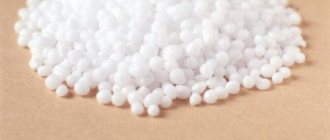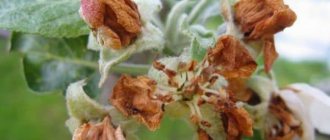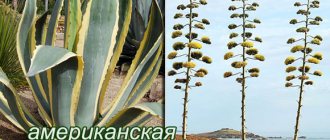What assumptions might arise?
Why do trees shed their leaves in the fall? Various associations immediately arise in my head about what is happening:
- The foliage of the trees has aged, it has become cold, and therefore it is falling.
- In autumn, the leaves no longer have enough light to grow.
- The reason leaves fall is the wind.
Naturally, all these assumptions are subject to verification to determine the true reasons.
When does leaf fall end for different trees?
Leaf fall, as a seasonal phenomenon, occurs in each plant at its own specific time. It depends on the type of tree, its age and climate conditions.
Poplar and oak are the first to part with their leaves, then the time comes for rowan. The apple tree is one of the last to shed its leaves, and even in winter, there may still be a few leaves left on it.
Poplar leaf fall begins at the end of September, and by mid-October it completely ends. Young trees retain their foliage longer and turn yellow later.
The oak begins to lose its leaves at the beginning of September and after a month it completely loses its crown. If frosts start earlier, leaf fall occurs much faster. Along with the oak leaves, acorns also begin to fall off.
What role do leaves play in the life of trees?
The leaf structure is represented by two parts: the leaf blade and the petiole, which is its stem. The structure of the plate is represented by veins. They are especially clearly visible from below. It turns out that they are vessels designed for the movement of water. Each leaf contains green chlorophyll grains. They are so small that they are not visible to the naked eye. Grains can be compared to tiny factories. They are used to prepare food for the entire tree. They build the material from which new branches, buds, roots and, naturally, the trunk itself are formed.
They receive energy for their production from the sun. They absorb light throughout the day. Chlorophyll is unstable and is constantly subject to destruction. But at the same time, its regular restoration occurs. For any tree, green leaves are essential. But the yellow leaf does not nourish the tree, but only takes moisture from it.
What is the role of leaves for a tree
The main role of foliage is the formation of organic products. The leaves perfectly “absorb” the sun’s rays. The plates contain chloroplasts, in which photosynthesis occurs. This ensures the formation of organic substances.
Foliage is also necessary to remove excess moisture; for example, an adult birch tree loses up to 40 liters of water in 24 hours. The liquid enters through peculiar vessels that come from the rhizome itself. In the plates, water moves between the cells. Thanks to this, the movement of mineral elements throughout the planting occurs.
Another purpose of foliage is to facilitate gas exchange. Carbon dioxide enters through the stomata, and then oxygen comes out. This is the result of photosynthesis occurring. Thanks to this, trees support the life of living things on Earth.
It is through the leaf blades that the planting receives the energy required for growth. In their absence, the tree may die completely. This does not apply to so-called evergreens.
All trees can be divided into:
The life cycle of green mass varies greatly among them. They have different developmental features. The deciduous type is the most common. This tree sheds its leaves completely for the winter.
Why does the color change?
Simultaneously with the destruction of chlorophyll, the process of its restoration occurs. Moreover, the formation of green matter does not lag behind its destruction. As long as there is enough light, there is a certain balance and equilibrium between these processes. With the onset of autumn, due to the lengthening of nights, daylight hours become shorter. Having been destroyed, chlorophyll simply does not have time to recover in a day. Therefore, the predominant color becomes not green, but yellow. But fading leaves are not the only color of this color. They can acquire a red, crimson, or other color. This is determined by which coloring matter is predominant in the wilting leaf.
The foliage also varies in brightness. It depends on what the weather is like in the fall. The abundance of rain causes excessive saturation of the foliage with moisture. This makes them dull in character. Alder and lilac lose their foliage regardless of the weather. In them, chlorophyll is simply the only coloring substance.
Trees and shrubs in autumn. Autumn changes. Why do leaves turn yellow and fall off?
When the days become shorter, and the sun no longer generously shares its warmth with the earth, one of the most beautiful times of the year begins - autumn. She, like a mysterious sorceress, changes the world around her and fills it with rich and unusual colors. These miracles occur most noticeably with plants and shrubs. They are one of the first to respond to weather changes and the onset of autumn. They have three whole months ahead to prepare for winter and part with their main decorations - leaves. However, first, the trees will certainly delight everyone around with the play of color and the madness of colors, and the fallen leaves will carefully cover the earth with their blanket and protect its smallest inhabitants from severe frosts.
Various folk signs
For many years, man has constantly observed nature. Thanks to this, many folk signs were formed. Many of them are also associated with changes in foliage color:
- If the leaf has turned yellow, but the process of falling is not expressed, then frost is still far away.
- The trees are covered with yellow foliage ahead of time - autumn will be early.
- Despite the snow falling, winter will not come as long as the leaves remain on the cherry tree.
- Drupes can predict the weather with their leaves. A downward spiral indicates good days. If it's the other way around, the weather will be bad.
- If leaves appear on birch earlier than on alder, then the summer will be windy in nature. If the birch is ahead of the alder, then the summer will be cold and rainy.
- Early spring is predicted by early yellowness at the top of the birch tree in the fall. If the birch tree begins to turn yellow from below, this indicates a late onset of spring.
- The appearance of buds and leaves on the oak tree before the ash tree indicates the humidity and coolness of the coming summer. But if the ash gets ahead of the oak, then we should expect a warm and dry summer.
Why do trees shed leaves in the fall and why not everyone does it?
Shedding leaves in the fall is not just a whim or a fashion trend; in nature, as you know, everything is rational. There are several reasons for dropping leaves:
1) Save yourself from drought. The fact is that the leaf not only breathes, but also evaporates the moisture extracted by the roots from the soil. But in winter it is difficult to extract moisture, especially if the soil is frozen. So the remaining leaves would simply lead the tree to death from thirst;
2) The second reason, called by scientists, is protection from mechanical damage. After all, in winter, snow cover can break branches, and on branches with leaves, more snow would linger, which means the damage to the branches would be more serious;
3) Excessive mineralization. When a tree absorbs water from the soil, it also absorbs salts and other components dissolved in it. Some of this is used in the tree, but unnecessary or excess accumulates in the foliage. And the more the tree “pumps” moisture from the soil into the air, the stronger the mineralization. To solve the problem of this excess, the tree sheds its leaves.
An additional bonus of leaf fall is the protection of the soil under the tree from excessive freezing and early frosts - so that the tree has time to smoothly prepare for winter, “moving” all the nutrients from the leaves deep into the trunk.
Why do conifers remain green? The needles are smaller in area; they have stomata arranged in a special way, through which trees lose moisture. Well, of course, the waxy coating also retains valuable water.
What about larch? She's a conifer and sheds needles? The fact is that larch sheds its leaves not only when the weather gets colder in autumn and daylight hours shorten, it does this when unfavorable conditions occur. Scientists suggest that historically it was evergreen, but adapting to new, more northern and harsh conditions, it was forced to “play by different rules.” In addition, of all conifers, larch has the thinnest protective layer of needles, which is designed to adapt only to the warm period.
Everything is clear with fallen leaves, but what about those who don’t shed them? For example, rhododendrons or boxwoods? Their foliage can survive any weather conditions. Of course, the foliage of these plants is also renewed, only constantly and gradually, in small quantities.
But leaves on garden trees that have not fallen in time are an alarming sign; it may indicate disease, lack of preparedness for winter, an excess of fertilizers; in general, you need to take urgent measures to save them if this happens.
The onset of leaf fall
An autumn tree never waits for a command to shed its leaves. This happens spontaneously. Why do trees shed their leaves in the fall? With the onset of cool weather, the color of the leaves changes. The petioles also undergo certain changes. The “bricks” of foliage are connected to each other by strong bonds. The leaf is also firmly attached to the branch. It is not so easy, for example, to separate a leaf from a birch branch. In autumn, with the change in color, these connections are destroyed. Therefore, the leaf is very weakly attached to the branch. Sometimes you just need to touch it and it immediately falls.
This is due to the formation of a special cork layer. It seems to separate the petiole from the branch and becomes a real barrier between them. The sheet is fastened only with the help of thin tubes. Therefore, we can conclude that it is not a leaf being torn off from a branch, but a separation in a certain place. This is observed exactly where the formation of the cork layer occurred.
Presentation “Why trees shed their leaves in autumn”
Svetlana Sherstneva
Presentation “Why trees shed their leaves in autumn”
Why do trees shed their leaves in autumn??
Will trees be able to survive the winter without shedding their leaves ?
A person changes clothes with each season. In the fall we dress warmer, in the winter we wrap ourselves up properly, in the spring people replace too warm winter clothes with lighter ones, in the summer people wear very light clothes.
Trees also wear “clothes”
according to the season, but they do not act like a person, but on the contrary.
In spring it is covered with leaves and flowers , in summer they have denser foliage and fruits appear . In autumn they gradually shed their leaves . In winter they stand naked.
What happens to trees in autumn ? Yellow paint is always found in trees . Only in summer the yellow color is invisible, it is clogged with a stronger one - green.
The green color of the leaves is given by a special substance – chlorophyll. But it only works in the light. Therefore, in the summer, when the sun shines for a long time, the leaves are green .
Trees are not freed from foliage immediately , not suddenly, but gradually. Preparations are underway for leaf fall . Amazing transformations occur in the leaves
In autumn the nights lengthen . The sun shines less and chlorophyll is destroyed. The green color in the leaves decreases , and the yellow becomes more noticeable.
When will the leaves start to fall ? No one tells trees when to shed their leaves . They are sensitive to the change of day and night. The days become shorter, and the tree begins to draw nutrients the leaves
But in autumn the leaves are not only yellow , but also red, crimson, and orange. It depends on what coloring matter is in the wilting leaf .
In autumn it begins to get colder , the soil gradually freezes and tree to extract water from it. By winter, the tree completely stops receiving water and nutrition from the soil. If the leaves continued to remain on the tree , the water would evaporate through their surface and the tree would then die . And in the fall, the tree throws out into its leaves all the bad , unnecessary substances that have accumulated in the tree over the summer . This is why deciduous trees need to lose their leaves in the fall before the long, cold winter.
By shedding its leaves , nature protects the thin, fragile branches of the tree from the weight of the snow .
Conclusion: tender, water-filled leaves would turn into pieces of ice in frost; the tree would not be able to survive the winter. It is by being left without leaves that the tree is able to survive frosts. The naked tree seems defenseless and stands lonely in the cold wind. In fact, it is reliably protected.
The trees are "sleeping"
in the cold season.
Roots no longer absorb water from frozen ground. The remaining liquid continues to move inside the barrel, but very slowly. And in the spring the tree wakes up . Who knows what dreams it had in winter? Maybe the tree was dreaming of the summer sun?
Which trees are the first to shed their leaves in autumn?
Calendar autumn begins on the first of September. But according to astronomical standards, its beginning is considered to be the autumn equinox, which falls on September 21. According to phenologists, as soon as the leaves begin to turn yellow and fall off, we can talk about the coming autumn.
Which trees shed their leaves first in the fall? The intensity of leaf fall varies. This applies not only to different types of trees, but also to different representatives of the same species. The situation depends on many factors and is determined by the nature of the weather, the age of the tree, and its individual characteristics. Leaf fall occurs in different sequences. Oak trees cannot part with their foliage for quite a long time. But the appearance of their leaves is observed later than in other types of trees. There are individual specimens that do not lose leaves at all. This phenomenon has not yet found an explanation from scientists.
Linden, birch and elm are the earliest to lose their leaves. They are susceptible to leaf fall already in early autumn. The loss of leaves from different parts of the tree also occurs unevenly. For example, in a poplar tree, the large lower branches are the first to lose their leaves. Then the middle part becomes “bare”, and the top of the head is the last to be affected. Elm or poplar behave somewhat differently. It begins to lose its leaves, on the contrary, from the top. The crown begins to melt gradually, exposing the trunk more and more.
Some autumn trees retain their foliage even with the first frost. This situation is observed in the case of aspen and maple. Only spruce and pine do not shed their needles with the onset of autumn. They will remain green all winter.
Why do leaves change color in autumn?
With the onset of autumn, trees and shrubs decide to change the emerald color of their leaves to brighter and more unusual colors. At the same time, each tree has its own set of pigments—“colors.” These changes occur because the leaves contain a special substance, chlorophyll, which converts light into nutrients and gives the foliage its green color. When a tree or shrub begins to store moisture and it no longer reaches the emerald leaves, and the sunny day becomes much shorter, chlorophyll begins to break down into other pigments, which give the autumn world crimson and golden tones.
Which tree is the latest to shed its leaves in autumn?
The phenomenon of leaf fall is associated with a seasonal nature. In this way, plants adapt to winter. The frosts have not yet arrived, but the foliage of the plants has already begun to blaze with different colors. In a number of trees this phenomenon can be observed already in early August. The crowns of the linden tree are painted with gold. 2-3 weeks will pass, and the foliage will literally begin to burn with gold. By this time, a similar outfit is already observed on birch trees. The aspen trees look as if they were covered with red. Red leaves are already visible among the rowan trees. By the end of September, the crowns of many trees are bare.
At the beginning of October, the weeping willow finishes its leaf fall. By the end of September, leaf fall had ended at the elm and bird cherry trees. Birch, maple and walnut are in no hurry to give up their foliage. Individual leaves remain on them until mid-October. But these are all averages. Naturally, they can change in one direction or another. This depends on the region where the trees grow and the weather conditions that prevailed in that particular autumn.
Trees that do not shed their leaves in winter
It is no coincidence that trees shed their leaves for the winter. This is a natural protective process. By winter, leaf blades accumulate too many toxic agents. That is why the tree must get rid of them as soon as possible. Some plants do not shed their leaves in the winter. This is due to the characteristics of their growth. It must also be remembered that the reason for the leaves not falling may lie in disease.
What is the purpose of leaf fall?
What are the reasons for leaf fall in autumn? Trees shed their leaves for a reason. This is their protection from various mechanical damage. In winter there are often snowfalls accompanied by strong winds. Not only can foliage suffer from their pressure, but even branches and trees can break. There will be even more damage if the foliage traps snow on its surface.
Why do trees shed their leaves in the fall? With leaf fall, minerals that have accumulated in sufficient quantities over the summer are removed. They no longer bring any benefit to plants; on the contrary, they can only cause harm. The leaves, falling to the ground, rot and help return minerals to the soil. The plants will still need them. This circumstance explains the need for leaves to fall. This situation has developed over millions of years. With the arrival of winter, only those trees that shed the maximum number of leaves for the winter were able to survive.
Damage to foliage
Foliage falls not only due to reduced daylight hours, but also due to the large amount of damage. During the warm season, leaf blades collect many toxic compounds, working as a filter. This helps the plant to survive even in polluted environmental conditions and not suffer greatly from accumulated harmful substances (excess mineral salts, metabolites). The leaves are also affected by other unfavorable factors, which are presented:
- attacks by harmful insects;
- consequences of diseases;
- general wear and tear.
Leaves fly off the branches due to damage even in the case of evergreen, and not just deciduous, plants. However, compared to ordinary trees, which shed all their leaves in a short time, in coniferous vegetation this process is constant. Their damaged leaf blades fall off immediately after being severely damaged.
Should I burn leaves in the fall?
Now it’s clear why trees shed their leaves in the fall. Should they be burned? The ground is covered with leaves and other parts of trees. All this is defined as litter. In forests with a predominance of deciduous trees it reaches 4 tons per hectare of land. It is slightly smaller among pine representatives. The figure is approaching 3.5 tons. It accumulates for a reason, but has a certain meaning. It promotes the accumulation of humus and minerals in the soil. If the litter is loose, it decomposes easily and water flows into the soil. The process of rotting dense litter takes a very long time and is accompanied by a sour smell. It prevents the soil and plant roots from freezing too much.
Due to humus, the soil acquires a dark color, and therefore is heated more strongly by the sun. Cooling occurs slowly, which favors the proliferation of beneficial microflora in the soil. If the leaf litter is removed, the growth of plantings will decrease by 11%.
Why do trees shed their leaves in the fall? Causes of autumn leaf fall
Autumn is a wonderful time. The fact that it has arrived can already be judged by the fact that the leaves on the trees and bushes change their color. At this time, the leaves have an extremely rich palette of colors.
Nature itself paints them in different shades, so much so that any artist would envy. Why does this happen every year? Why do trees shed their leaves in the fall? This issue should be examined in more detail.
The onset of leaf fall
An autumn tree never waits for a command to shed its leaves. This happens spontaneously. Why do trees shed their leaves in the fall? With the onset of cool weather, the color of the leaves changes. The petioles also undergo certain changes.
The “bricks” of foliage are connected to each other by strong bonds. The leaf is also firmly attached to the branch. It is not so easy, for example, to separate a leaf from a birch branch. In autumn, with the change in color, these connections are destroyed. Therefore, the leaf is very weakly attached to the branch.
Sometimes you just need to touch it and it immediately falls.
This is due to the formation of a special cork layer. It seems to separate the petiole from the branch and becomes a real barrier between them. The sheet is fastened only with the help of thin tubes. Therefore, we can conclude that it is not a leaf being torn off from a branch, but a separation in a certain place. This is observed exactly where the formation of the cork layer occurred.
Which trees are the first to shed their leaves in autumn?
Calendar autumn begins on the first of September. But according to astronomical standards, its beginning is considered to be the autumn equinox, which falls on September 21. According to phenologists, as soon as the leaves begin to turn yellow and fall off, we can talk about the coming autumn.
Which trees shed their leaves first in the fall? The intensity of leaf fall varies. This applies not only to different types of trees, but also to different representatives of the same species. The situation depends on many factors and is determined by the nature of the weather, the age of the tree, and its individual characteristics.
Leaf fall occurs in different sequences. Oak trees cannot part with their foliage for quite a long time. But the appearance of their leaves is observed later than in other types of trees. There are individual specimens that do not lose leaves at all.
This phenomenon has not yet found an explanation from scientists.
Linden, birch and elm are the earliest to lose their leaves. They are susceptible to leaf fall already in early autumn. The loss of leaves from different parts of the tree also occurs unevenly. For example, in a poplar tree, the large lower branches are the first to lose their leaves.
Then the middle part becomes “bare”, and the top of the head is the last to be affected. Elm or poplar behave somewhat differently. It begins to lose its leaves, on the contrary, from the top.
The crown begins to melt gradually, exposing the trunk more and more.
Some autumn trees retain their foliage even with the first frost. This situation is observed in the case of aspen and maple. Only spruce and pine do not shed their needles with the onset of autumn. They will remain green all winter.
Which tree is the latest to shed its leaves in autumn?
The phenomenon of leaf fall is associated with a seasonal nature. In this way, plants adapt to winter. The frosts have not yet arrived, but the foliage of the plants has already begun to blaze with different colors. In a number of trees this phenomenon can be observed already in early August.
The crowns of the linden tree are painted with gold. 2-3 weeks will pass, and the foliage will literally begin to burn with gold. By this time, a similar outfit is already observed on birch trees. The aspen trees look as if they were covered with red. Red leaves are already visible among the rowan trees.
By the end of September, the crowns of many trees are bare.
At the beginning of October, the weeping willow finishes its leaf fall. By the end of September, leaf fall had ended at the elm and bird cherry trees. Birch, maple and walnut are in no hurry to give up their foliage.
Individual leaves remain on them until mid-October. But these are all averages. Naturally, they can change in one direction or another.
This depends on the region where the trees grow and the weather conditions that prevailed in that particular autumn.
What are the reasons for leaf fall in autumn? Trees shed their leaves for a reason. This is their protection from various mechanical damage. In winter there are often snowfalls accompanied by strong winds. Not only can foliage suffer from their pressure, but even branches and trees can break. There will be even more damage if the foliage traps snow on its surface.
Why do trees shed their leaves in the fall? With leaf fall, minerals that have accumulated in sufficient quantities over the summer are removed. They no longer bring any benefit to plants; on the contrary, they can only cause harm.
The leaves, falling to the ground, rot and help return minerals to the soil. The plants will still need them. This circumstance explains the need for leaves to fall. This situation has developed over millions of years.
With the arrival of winter, only those trees that shed the maximum number of leaves for the winter were able to survive.
Should I burn leaves in the fall?
Now it’s clear why trees shed their leaves in the fall. Should they be burned? The ground is covered with leaves and other parts of trees. All this is defined as litter. In forests with a predominance of deciduous trees it reaches 4 tons per hectare of land. It is slightly smaller among pine representatives. The figure is approaching 3.5 tons.
It accumulates for a reason, but has a certain meaning. It promotes the accumulation of humus and minerals in the soil. If the litter is loose, it decomposes easily and water flows into the soil. The process of rotting dense litter takes a very long time and is accompanied by a sour smell.
It prevents the soil and plant roots from freezing too much.
Due to humus, the soil acquires a dark color, and therefore is heated more strongly by the sun. Cooling occurs slowly, which favors the proliferation of beneficial microflora in the soil. If the leaf litter is removed, the growth of plantings will decrease by 11%.
Why don't the needles fall off?
In the life of any tree or shrub, leaves play a fairly significant role. They create and accumulate substances necessary to nourish the tree. Due to the fact that in winter there is not enough light, useful components are intensively consumed and moisture evaporates too intensely.
The habitat of coniferous plants is, as a rule, an area where there is a harsh climate. Such plants need increased nutrition, and therefore their needles do not fall off during the winter.
They contain large amounts of chlorophyll, which helps transform nutrients. The small needle area significantly reduces evaporation. It also has protection from the cold, which is due to the wax coating.
Thanks to this, the needles are not able to freeze even in severe frosts.
The only plant with needles that loses its leaves in the winter is larch.
Evergreens
For such representatives, the foliage does not fall off even with the arrival of cold weather. They constantly have leaves that can survive any weather conditions. Naturally, their foliage is constantly renewed. But this happens gradually.
Such plants can be found where the climate is mild and warm in nature. Such places are warm even in winter. But they can also be found where the climate is harsh.
An easy example is the blue fan palm, which can be found in California.
Source: https://FB.ru/article/353219/pochemu-derevya-osenyu-sbrasyivayut-listya-prichinyi-osennego-listopada
Causes of leaf falling
Trees prepare for leaf fall in advance. Even in the summer, a bud is born in the axil of the leaf petiole, and organic substances are deposited in the wood cells.
Spring will come and, due to these reserves, the bud will develop into a young shoot with leaves.
By autumn, a layer of cells forms at the leaf petiole, which separates the leaf petiole from the branch; in the fall, the leaf easily separates from the branch and falls off.
The meaning of leaf fall
Leaf fall is the adaptation of plants to winter conditions. By shedding leaves for the winter, trees protect themselves from mechanical damage. Often in winter, during snowfalls, even large tree branches break under the pressure of snow.
There would be even more such breakdowns if the leaves did not fall and retain the snow on their surface.
Leaf fall helps remove various mineral salts, a large amount of which accumulates in the leaves in autumn and becomes harmful to the plant. Leaf fall returns mineral salts to the soil.
The leaves rot and the mineral salts are reused to feed the plants. Hence, leaf fall depends not only on external, but also on internal reasons, that is, it becomes necessary as a result of the life activity of the plant itself.
Where does the phenomenon of leaf fall begin? From additional literature we learned that such a peculiar adaptation of nature began to take shape. About 60 million
years ago, when the warm and humid climate of our places began to gradually give way to seasonal, with cold and snowy winters. In the new conditions, only those trees and shrubs survived that went into winter with fewer leaves. This is how this important property of the leaf developed from generation to generation.
Should you burn leaves in the fall?
The soil is covered with a layer of fallen leaves, branches, bark, and dead grass. This layer is called the forest floor. In a deciduous forest, litterfall annually amounts to about 4 tons, and in a pine forest - up to 3.5 tons per 1 hectare. Forest litter is of great importance in the life of the forest.
The accumulation of humus and minerals in the soil and the development of biological processes depend on it. Loose litter easily decomposes and lets water into the soil; dense litter takes a long time to rot and has a sour odor. The litter protects the soil and plant roots from freezing.
Humus colors the soil in dark colors, so these soils are better heated by the sun's rays, cool slowly and thereby create favorable conditions for the life of beneficial microorganisms and plant roots in the soil. Removing leaf litter reduces plant growth by 11%.
Why do trees shed their leaves in the fall?
If the trees did not shed their leaves for the winter, they would die. There are several reasons for this.
Reason one.
The leaves of the tree together have a very large area, and water evaporates intensely from this entire area. In summer, the tree is able to compensate for moisture loss by extracting water from the soil.
But with colder weather, the extraction of cold water from the soil is greatly reduced in winter; in winter, it is completely difficult to extract moisture from frozen soil.
Trees with deciduous cover would die in winter from lack of moisture, that is, they would dry out.
For the same reason, when the dry season approaches in the tropics and subtropics, trees in these climatic zones shed their leaves and stand bare until the arrival of the rainy season.
Reason two.
Have you noticed that after heavy snowfalls, tree branches bend strongly to the ground under the weight of the snow? Some branches even break as a result.
If the leaves remained on the trees in winter, then much more snow would be retained on the branches, since the leaf surface, as we said above, is large.
Source: https://dachuvopros.com/pochemu-derevya-sbrasyvayut-listya-osenyu/
Why don't the needles fall off?
In the life of any tree or shrub, leaves play a fairly significant role. They create and accumulate substances necessary to nourish the tree. Due to the fact that in winter there is not enough light, useful components are intensively consumed and moisture evaporates too intensely.
The habitat of coniferous plants is, as a rule, an area where there is a harsh climate. Such plants need increased nutrition, and therefore their needles do not fall off during the winter. They contain large amounts of chlorophyll, which helps transform nutrients. The small needle area significantly reduces evaporation. It also has protection from the cold, which is due to the wax coating. Thanks to this, the needles are not able to freeze even in severe frosts.
The only plant with needles that loses its leaves in the winter is larch.
Arid climate
Deciduous trees shed their leaves during drought to avoid drying out.
During hot weather, leaves evaporate a lot of moisture. The roots of the tree, while supplying the leaves, lose a large amount of water. Coniferous foliage, so-called. evergreen trees are not subject to falling off, since their needles, occupying a small surface area, require less moisture compared to deciduous trees. Thus, deciduous trees shed their leaves during dry periods to reduce the need for moisture and avoid drying out.
Interesting: With what force does the air press on a person?
Evergreens
For such representatives, the foliage does not fall off even with the arrival of cold weather. They constantly have leaves that can survive any weather conditions. Naturally, their foliage is constantly renewed. But this happens gradually. Such plants can be found where the climate is mild and warm in nature. Such places are warm even in winter. But they can also be found where the climate is harsh. An easy example is the blue fan palm, which can be found in California.
The meaning of leaf fall
Leaf fall is the adaptation of plants to winter conditions. By shedding leaves for the winter, trees protect themselves from mechanical damage. Often in winter, during snowfalls, even large tree branches break under the pressure of snow. There would be even more such breakdowns if the leaves did not fall and retain the snow on their surface. Leaf fall helps remove various mineral salts, a large amount of which accumulates in the leaves in autumn and becomes harmful to the plant. Leaf fall returns mineral salts to the soil. The leaves rot and the mineral salts are reused to feed the plants. Hence, leaf fall depends not only on external, but also on internal reasons, that is, it becomes necessary as a result of the life activity of the plant itself. Where does the phenomenon of leaf fall begin? From additional literature we learned that such a peculiar adaptation of nature began to take shape. About 60 million years ago, when the warm and humid climate of our places began to gradually give way to seasonal, with cold and snowy winters. In the new conditions, only those trees and shrubs survived that went into winter with fewer leaves. This is how this important property of the leaf developed from generation to generation.











